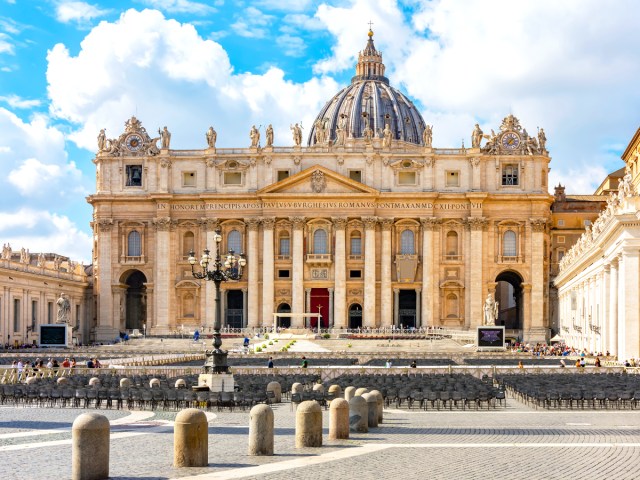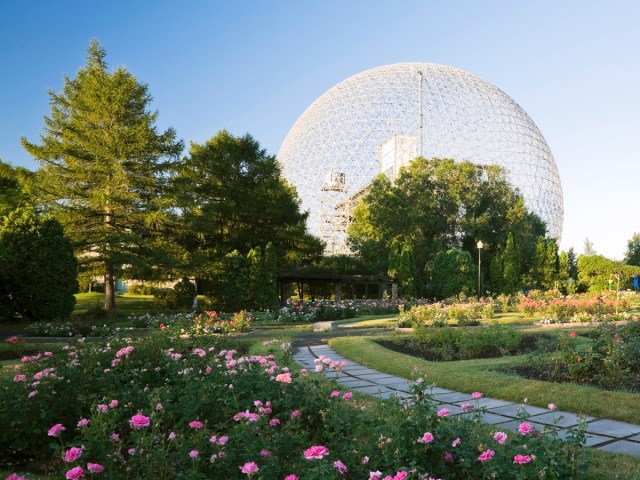The world’s most impressive architectural domes showcase human creativity and structural ingenuity. From ancient structures to modern buildings, these domes demand our attention and define the skylines they rule over. The purposes of these domes range from mausoleum to museum to house of worship, but each tells its own story of innovation, creation, and tradition. Here are five of the most stunning architectural domes around the world.
Taj Mahal – Agra, India

One of the most recognizable buildings on the planet, the Taj Mahal in Agra, India, was declared one of the New Seven Wonders of the World in 2007. Mughal Emperor Shah Jahan commissioned the mausoleum in memory of his wife Mumtaz Mahal, who died during childbirth in 1631, and its designer was the talented architect Ustad Ahmad Lahauri.
A large part of what makes the Taj Mahal so striking is its 75-foot-tall gleaming white marble dome, a type dubbed an “onion dome” due to its shape and color. The inlay work of precious stones, floral design, and intricate motif is impressive. Interestingly, the dome’s design also causes a single note from a flute to echo five times due to the unique acoustics. Four smaller domes and four minarets cluster around the largest one in the center, which reaches a commanding height of 240 feet.
St. Peter’s Basilica – Vatican City

As the centerpiece of Vatican City — the world’s smallest country, which is entirely encircled by Rome — St. Peter’s Basilica holds an impressive number of superlatives. Not only is it the largest church in the world, but St. Peter’s Basilica also features the world’s tallest dome, with the inside of its lantern soaring to 384 feet. In 1546, Pope Paul III commissioned Michelangelo to design the dome, making it one of the final projects of the artist’s career before his death in 1564. The construction of the basilica, built over the site of a fourth-century church, took 120 years, ultimately reaching completion in 1626.
Directly beneath the dome is the resting place of St. Peter, one of Jesus’ Twelve Apostles, who is considered the first leader of the Catholic Church. The dome is divided into 16 wedge-shaped compartments, each beautifully decorated with mosaics crafted by a variety of artists between 1598 and 1613. Climbing the 551 steps to the top of the cupola is an epic way to experience St. Peter’s Basilica, offering the chance to see the statues of the Twelve Apostles on the roof and the breathtaking view down Via della Conciliazione.
Hagia Sophia – Istanbul, Turkey

Built between 532 and 537 CE, the Hagia Sophia was once the largest Eastern Roman church in Istanbul. After the Turks conquered Constantinople in the 15th century, Ottoman Sultan Mehmed II transformed the sixth-century building into a mosque, adding wooden minarets and several other Islamic features. In 1935, President Kemal Ataturk ordered the building be turned into a museum, and finally, in 2020, President Recep Tayyip Erdoğan converted the museum back into a functioning mosque.
Through the building’s many changes over the years, Hagia Sophia’s dome has continued to be the structural highlight, celebrated for its intricate design and unique architecture. Reaching 182 feet high and 104 feet wide, the dome is covered in gilded mosaics that beautifully reflect the light of the 40 windows ringed around its base. The original dome, designed by Anthemius of Tralles and Isidore of Miletus, no longer stands after it collapsed due to an earthquake in 558 CE, but it was replaced by the one we see today. The new dome was designed by Isidore the Younger, the nephew of one of the original designers, although it has been damaged or partially destroyed and restored several times throughout the Hagia Sophia’s long and fascinating history.
Pantheon – Rome, Italy

The Pantheon stands out as a remarkable structure in numerous ways, but no feature demands more attention for its architectural prowess, structural integrity, and unique design than its dome. Constructed in the second century, the structure’s looming dome stands at 71 feet tall and 142 feet wide, and is composed of concrete mixed with volcanic ash, which bolsters the material’s strength. One remarkable feature of the dome’s innovation is its progressively thinning walls made from lighter material as they rise to the peak. This technique not only prevents collapse under the dome’s own weight, but also allows it to stand as the largest unsupported concrete dome in the world.
However, the dome’s most interesting feature is undoubtedly the 27-foot oculus, the building’s only light source and considered by many to be a symbolic portal to heaven. The light plays off the rectangular indentations decorating the dome, creating an ethereal effect. The oculus also opens the structure to the elements, but the stack effect helps keep light rain out of the interior. When heavy rain does fall, the convex floor and strategically placed drains help rid the building of water.
Montreal Biosphere – Montreal, Canada

This geodesic dome located in Montreal’s Parc Jean-Drapeau was built by Richard Buckminster Fuller for the 1967 world’s fair, an event that commemorated Canada’s Centennial while celebrating human achievement, innovation, and cultural exchange. The structure — made from cylindrical steel tubes that recreate 75% of the surface area of a sphere — became the symbol of the event.
Following the expo, the sphere — originally constructed for the United States’ Pavilion at the fair — was gifted to Montreal by U.S. President Lyndon B. Johnson. The city repurposed it to host art exhibitions, nature projects, and a variety of family-friendly events. In 1995, the Biosphere was converted into a museum, the mission of which is to foster citizen awareness, action, and engagement pertaining to environmental issues, with exhibits that consider outer space, futuristic sustainable neighborhoods, and the ocean.
More from our network
Daily Passport is part of Inbox Studio, which publishes content that uplifts, informs, and inspires.
















